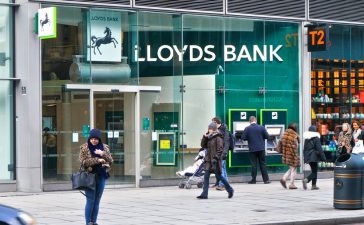The impact of successive Bank of England base rate hikes continued to impact the bridging market, raising the weighted average monthly interest rate on a bridging loan from 0.79 per cent to 0.84 per cent
Consumer caution in taking on unnecessary debt amid high inflation and mortgage interest rate rises affected the overall demand for bridging finance in the second quarter, according to new figures.
Bridging Trends contributors reported £165.7 million in bridging loan transactions – the lowest quarterly figure since the first quarter of 2022 (£156.77 million) and a 40.6 per cent decline from £278.8 million in the first quarter of this year.
The impact of successive BoE base rate hikes continued to affect the bridging market, raising the weighted average monthly interest rate on a bridging loan from 0.79 per cent to 0.84 per cent.
This is the highest interest rate since the second quarter of 2020 (0.85 per cent), as per Bridging Trends.
In spite of this, the average loan-to-value (LTV) stayed below 60 per cent, at 56.9 per cent, up from 54.7 per cent in the first quarter.
Bridging Trends says surging interest rates and product withdrawals from lenders have affected confidence in the market, causing borrowers to turn to bridging finance to conclude their property purchases.
In the second quarter, regulated bridging extended its market share from 46.2 per cent in the first quarter to 48.7 per cent – the highest proportion since the 53 per cent reported in the third quarter of 2020 amid the stamp duty holiday.
Demand for bridging loans to stop chain breaks remained the most popular use for bridging finance for the second consecutive quarter, at 24 per cent.
Property investors and landlords returned to the market in the second quarter, with bridging loans for investment purchase purposes climbing from 15 per cent in the first quarter to 22 per cent in the second quarter.
Bridging Trends says this is possibly due to investors and professional landlords taking advantage of a sluggish property market to buy assets at a reduced rate.
In the meantime, second charge bridging loan demand fell for the fourth successive quarter to its lowest level since the third quarter of 2021, dropping from 11.2 per cent in the first quarter to 10.7 per cent in the second quarter.
Pressure on the industry continued as the average bridging loan completion time climbed from 54 days in the first quarter to 58 days in the second quarter.
The average term of a bridging loan stayed consistent at 12 months.
Clifton Private Finance head of bridging Sam O’Neill says that the increase in rate does not come as a big surprise but it is good to see that it is not as much of a dramatic knee-jerk response as possibly it could have been.
Impact Specialist Finance managing director Dale Jannels said that although these latest figures might appear gloomy in terms of lending volumes in the second quarter, it feels far from it in terms of enquiries, although it is certainly harder and more time-consuming to get some cases placed and funded with interest rates where they are currently.
Jannels added: Despite this, what we are seeing is more motivated borrowers and fewer ‘tyre kickers’, which leads me to suspect a degree of pent-up demand is there and is ready to be unleashed once economic conditions become more favourable.






